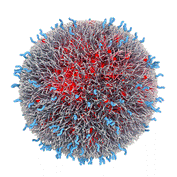Center, Biotechnology

Nebraska Center for Biotechnology: Faculty and Staff Publications
ORCID IDs
0000-0002-7560-6125
0000-0002-0532-0551
0000-0002-3267-4646
Document Type
Article
Date of this Version
2018
Citation
Scientific Reports | (2018) 8:14361
Abstract
Dictyostelids, or social amoebae, have a unique life style in forming multicellular fruiting bodies from unicellular amoeboids upon starvation. Recently, dictyostelids were found to contain terpene synthase (TPS) genes, a gene type of secondary metabolism previously known to occur only in plants, fungi and bacteria. Here we report an evolutionary functional study of dictyostelid TPS genes. The number of TPS genes in six species of dictyostelids examined ranges from 1 to 19; and the model species Dictyostelium purpureum contains 12 genes. Using in vitro enzyme assays, the 12 TPS genes from D. purpureum were shown to encode functional enzymes with distinct product profiles. The expression of the 12 TPS genes in D. purpureum is developmentally regulated. During multicellular development, D. purpureum releases a mixture of volatile terpenes dominated by sesquiterpenes that are the in vitro products of a subset of the 12 TPS genes. The quality and quantity of the terpenes released from D. purpureum, however, bear little resemblance to those of D. discoideum, a closely related dictyostelid. Despite these variations, the conserved clade of dictyostelid TPSs, which have an evolutionary distance of more than 600 million years, has the same biochemical function, catalyzing the formation of a sesquiterpene protoillud-7-ene. Taken together, our results indicate that the dynamic evolution of dictyostelid TPS genes includes both purifying selection of an orthologous group and species-specific expansion with functional divergence. Consequently, the terpenes produced by these TPSs most likely have conserved as well as speciesadaptive biological functions as chemical languages in dictyostelids.


Comments
© The Author(s) 2018
Open access
DOI:10.1038/s41598-018-32639-0